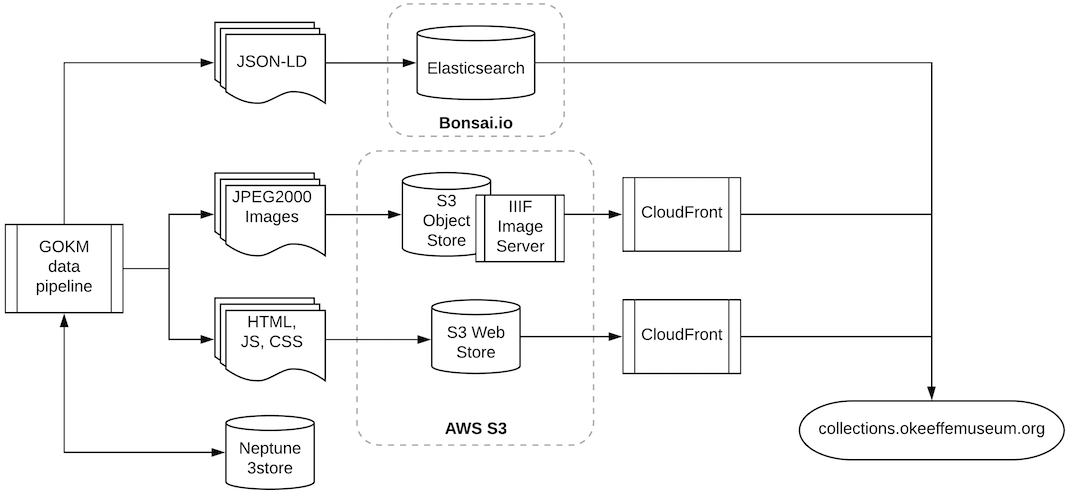Technology stack
Overview

Data and Image layers
The Georgia O'Keeffe Collections Data Pipeline consists of three layers of data handling:
Tabular data layer (selection, validation, escaping) --> Linked data layer (reconciliation, flattening, composition) --> Presentation layer (browse, search, display)
Likewise there is an image layer that takes uncompressed source images from a repository sync'd with a network share at the O'Keeffe museum that and compresses them to JPEG2000:
Uncompressed and unnormalized source images (TIFF, JPEG) --> Presentation layer (JPEG2000)
Data stores
Each of these layers use a few specific frameworks glued together with some basic plumbing code (written in Python) to move data between systems, manage the linked data graph, and prepare data for display:
- Field-specialist stores (ArchivesSpace, Vernon, Koha, other XML stores)
- Triplestore (AWS Neptune, Stardog, or RDF4J)
- Elasticsearch 6.x + Netlify static site
Data pipeline
Data is moved between these stores with a basic pipeline written in python that runs loading, transform, and export jobs through a simple queue that provides parallel execution. The command line options and structure use click, the processing queue uses Queues and a Pool from python's multiprocessing library, and linked data transforms and RDF generation are handled using the bulk RDF generator from USC-ISI's Karma project and (for some data types) Python's CSVW package. Image normalization is done in Pillow and JPEG2000 compression is executed with OpenJPEG. For a detailed breakdown of the pipeline stack, take a look at the collections app code.
Site generator
For generating the site from linked data, we use a few custom mapping classes that feed simplified JSON documents to HTML generators with Jinja2 templates and a few simple Elasticsearch management tools that use elasticsearch-py. For more information on the site generator, take a look at the collections app site generator code.
For deployment and production site generation we use a GitHub repository that automatically generates the front-end code on commit and publishes to a Netlify site.
References
- TBD